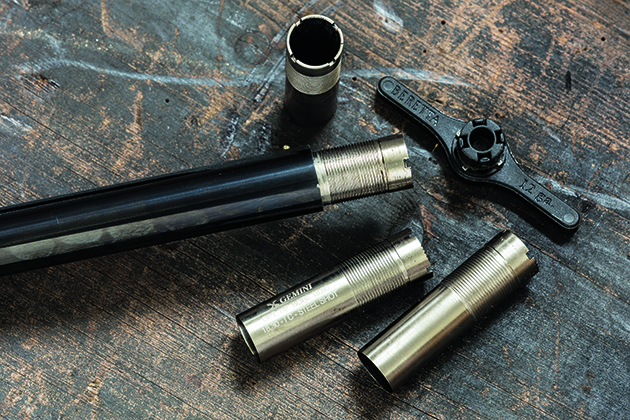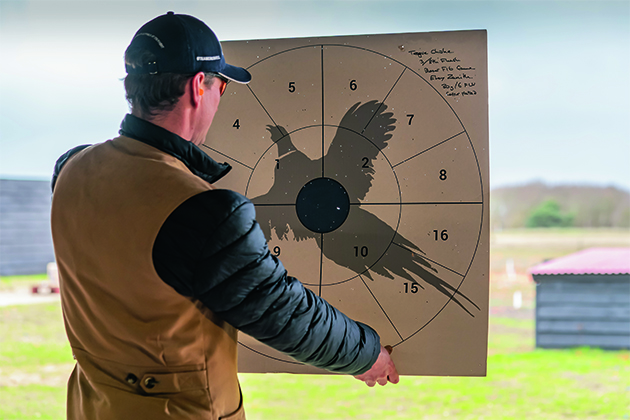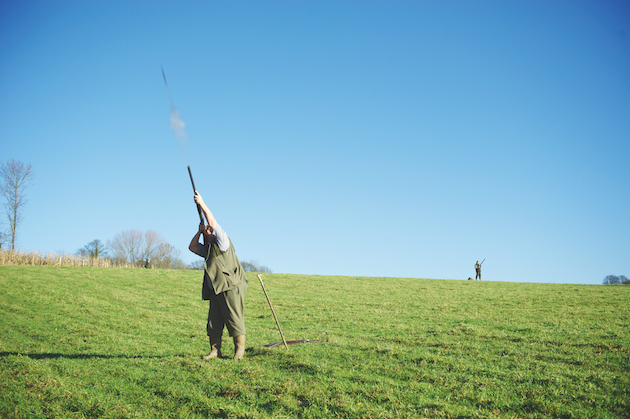How to choose a practical choke
Why your shooting success, whether driven, flighted, decoyed or walked-up, depends on the choke you use
Win CENS ProFlex DX5 earplugs worth £1,149 – enter here
 Usd SG sept 19 choke
Usd SG sept 19 choke
Chokes, the tapered constriction at the muzzle end of a gun, are a much-discussed topic out in the field and on the shooting ground. Who uses what choke, for which target and why? These questions are usually asked if someone is shooting well, the assumption being that if we use the same choke we will get the same results. But to reverse that, if someone is shooting poorly we don’t think that it is because they have the wrong choke in. So we can deduce that the person shooting well may have the right chokes in but they also have good stance, good gun fit and good technique. Chokes can help but they are not the only factor to shooting well.

The pattern made by a BlaserF16 with Teague choke, 3/8 flush, using Eley cartridges
The most desirable pattern will be as big as possible but dense enough to have multiple hits on the target to get a good break or kill. Too tight a choke will produce a small pattern that increases the difficulty and consistency on a close-range target. Too open a choke at distance will produce a pattern that may not be dense enough to break targets or kill game reliably.
The choice of choke is not the only factor affecting your pattern; your choice of cartridge can have a big influence, too. So, if you are getting serious about choke choice, pattern testing with different chokes and cartridges at a range of distances can produce some interesting results.

Good stance, gun fit and technique are as important as the right chokes
Why your shooting success, whether driven, flighted, decoyed or walked-up, depends on the choke you use
I’ve never been able to make up my mind on what’s the right amount of choke to have in a gun.…
Barrels are made as fixed choke or multichoke. Fixed choke guns are fixed to suit the discipline or sport that you are doing. Multichoke gives you the option to change to suit the discipline or even the specific target you are shooting at. Fixed-choke barrels will be marked as to how they are choked but if you are unsure ask your local gunsmith to measure. With multichoke guns, manufacturers have designed different choke systems; some are short, some are long. There is a whole specialist industry making aftermarket chokes for nearly all of the brands.
Get the latest news delivered direct to your door
Discover the ultimate companion for field sports enthusiasts with Shooting Times & Country Magazine, the UK’s leading weekly publication that has been at the forefront of shooting culture since 1882. Subscribers gain access to expert tips, comprehensive gear reviews, seasonal advice and a vibrant community of like-minded shooters.
Save on shop price when you subscribe with weekly issues featuring in-depth articles on gundog training, exclusive member offers and access to the digital back issue library. A Shooting Times & Country subscription is more than a magazine, don’t just read about the countryside; immerse yourself in its most authoritative and engaging publication.

